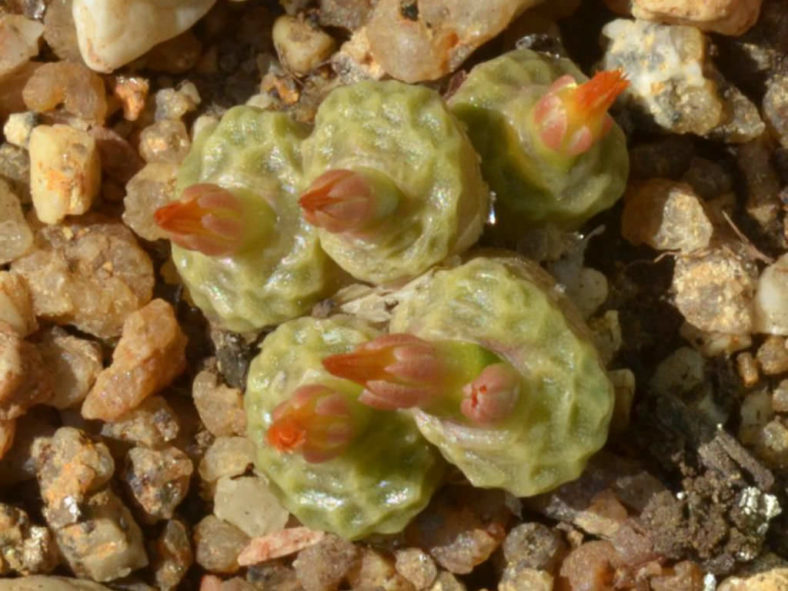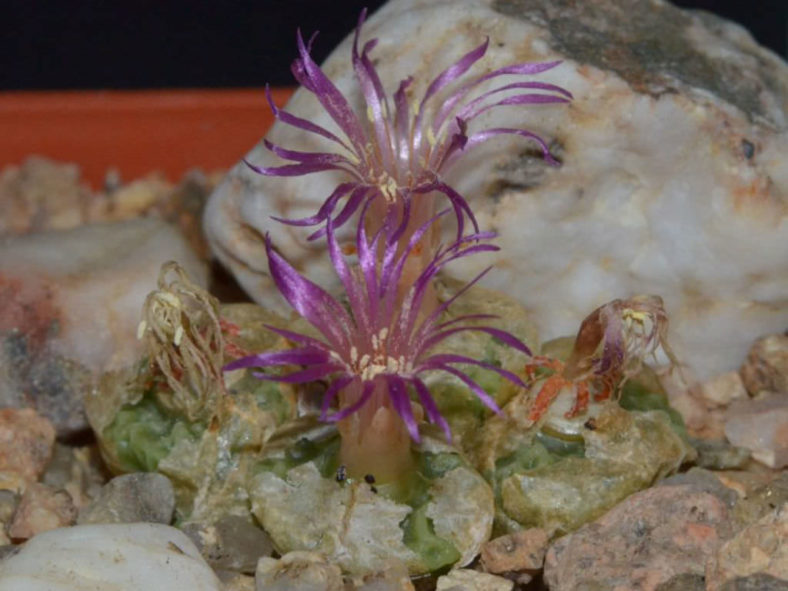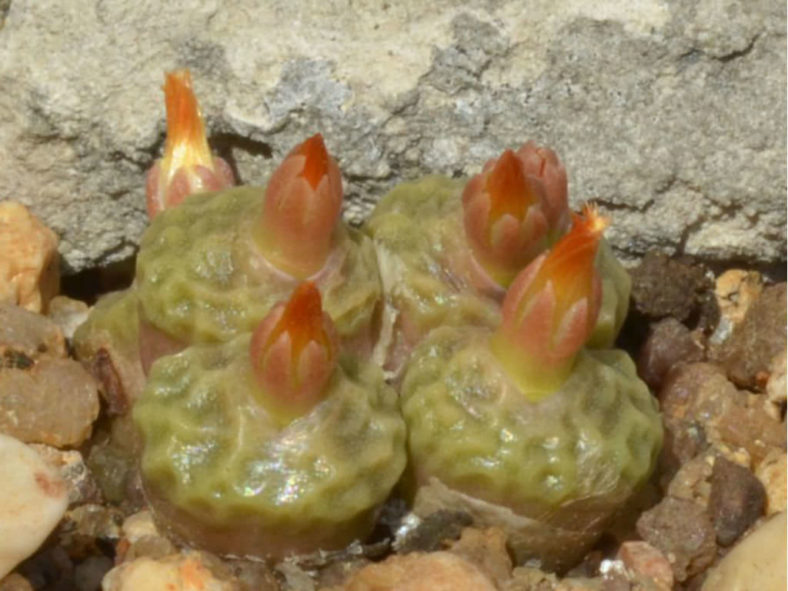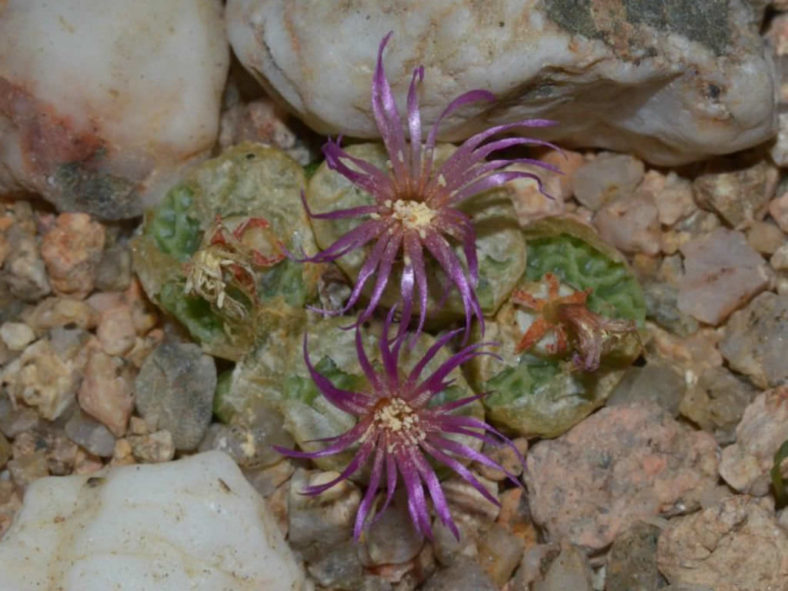Scientific Name
Conophytum angelicae (Dinter & Schwant.) N. E. Br.
Synonym(s)
Conophytum angelicae subsp. angelicae, Mesembryanthemum angelicae
Scientific Classification
Family: Aizoaceae
Subfamily: Ruschioideae
Tribe: Ruschieae
Genus: Conophytum
Etymology
The specific epithet "angelicae (an-JEL-ih-kay)" honors Angelika Aurelie Selma Rusch (1874-1938), wife of Ernst Julius Rusch (1867-1957) and a good friend of the German botanist and explorer Moritz Kurt Dinter (1868-1945).
Origin
Conophytum angelicae is native to South Africa (Northern Cape) and southern Namibia.
Description
Conophytum angelicae is a dwarf succulent with pea-shaped bodies that consist of two almost entirely fused leaves in shades of green, brown, purple, and pink. The bodies are rugose, roundish to somewhat four-sided at the apex. They can grow up to 0.4 inches (1 cm) tall and up to 0.7 inches (1.8 cm) in diameter, forming a dense mat with age.
The small, nocturnal flowers are brown to purple and appear in fall. The fruits are capsules with 4 to 8 locules.

How to Grow and Care for Conophytum angelicae
Light: Most Conophytums need bright light but do not like too much intense sunlight. To avoid sunburn, place them in a position to receive a few hours of full sun in cooler periods of the day.
Soil: These plants thrive best in a porous growing medium that will drain quickly. Use a commercial soil mix specially designed for growing succulents, or make your own.
Hardiness: Conophytum angelicae can withstand temperatures as low as 35 to 50 °F (1.7 to 10 °C), USDA hardiness zones 10b to 11b.
Watering: When Conophytums go dormant in the spring, they require little or no water. When plants begin growing in the fall, it is safe to water deeply, allowing the soil to dry before watering again.
Fertilizing: Conophytums are light feeders and do not need fertilizer if it is repotted every two years.
Repotting: These succulents will benefit from repotting. The best time to repot a Conophytum is at the beginning of active growth.
Propagation: Conophytums are easily propagated by division. They can also be grown from seeds.
Learn more at How to Grow and Care for Conophytum.
Toxicity of Conophytum angelicae
Conophytums are non-toxic and safe to grow around children and pets.
Links
- Back to genus Conophytum
- Succupedia: Browse succulents by Scientific Name, Common Name, Genus, Family, USDA Hardiness Zone, Origin, or cacti by Genus
Photo Gallery
Click on a photo to see a larger version.


